STEM (Science, Technology, Engineering and Maths) fields have long been dominated by men, but over the last few decades women have managed to buck the trend to some degree. Despite this, does a STEM gender gap still exist? And does a stigma still surround these areas for young girls, discouraging them from following their interests?
It’s the tenth edition of International Women in Engineering Day on June 23rd, so it seems like as good a time as any to delve into the subject matter and dig into the issues that still deter girls and women to pursue a career in STEM fields, and rather gravitate towards a more stereotypically ‘female’ job.
According to the Massachusetts Institute of Technology, women make up only 28% of the entire STEM workforce in 2023. That figure’s even less in the EU at just 17%. The number has significantly increased over the years, thanks to the success of many initiatives and events devised by organisations and education facilities. There are countless people who have clocked up thousands of hours of their time to try to level the playing field, but as you’ll find out in this article, we still have a long way to go to try to close the STEM gender gap.
The situation in the EU
This recent article from Eurostat states that almost 76 million people in the EU aged 15-74 were employed in science and technology in 2022. Of this figure, 52% of people were women, but were predominantly working in services. Scientists and engineers made up almost a quarter of the 76 million employed in science and technology, but in this area, women only accounted for 41% of roles, just a 2% rise in the last decade.
A report by McKinsey earlier this year showed that the average women’s share in tech roles in European companies is just 22%. When we break that down into specific roles, we can see that the highest area for female participation is in product design and management at 46%, whilst there’s only 18% in core engineering and 8% in DevOps and cloud roles. See a full breakdown below.

For more information about what the situation is currently like in the EU, check out our data-led article about the subject.
What’s being done about it?
With tons of events and initiatives currently in place across Europe, we’re turning the spotlight to one organisation in particular, which is located in one of the regions where Distrelec is present. Nordic Women in Stem was founded two years ago by Neha Imtiaz Ullah, an engineering student at Denmark’s Technical University, with the goal of narrowing the STEM gender gap and to expose the fields to girls across the Nordic region. Neha spoke to us to explain the reasons why she believes girls should be introduced to more hands-on concepts, and how important it is for their confidence.
“The aim is to give girls a chance to try STEM as a hands-on concept through various workshops. All throughout school we are taught the theoretical parts of STEM through classes like maths, and sciences, but I think the chance to work with coding, robotics, learning about energy systems, or space is definitely missing,” she said.
“I believe working with STEM as a hands-on concept allows young adults to find their true potential, especially girls, because many of them see themselves as not being naturally talented within STEM, but when they are given a chance to work with concepts such as coding, then they see how easy it is, it leads them to believe in their true potential.”
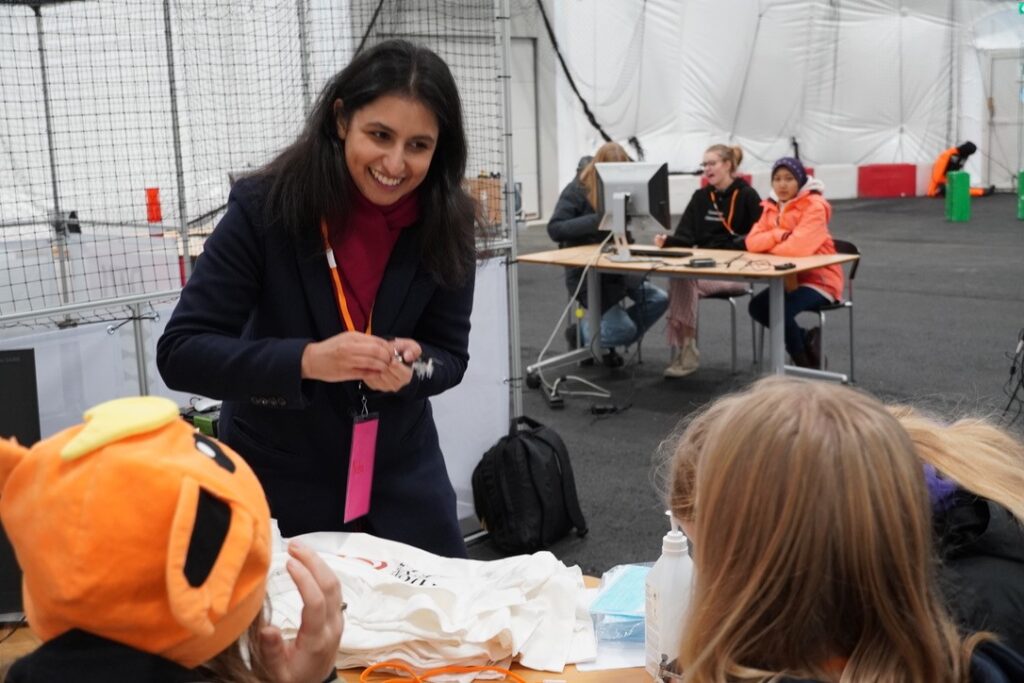
With the school curriculum missing out some key areas of STEM, Neha took it in her own hands to offer an exclusive after-school girls club called ‘Girls STEM Club’ with Nordic Women in STEM.
“There was no after school activity that was aimed at increasing young girls’ interest in STEM,” she continues. “I truly think, allowing girls to be with other like-minded girls has a positive impact, but sadly, no such activities existed before. There were some aimed at both genders, but there would always be more boys coming to those. I wanted to create something where girls could meet other like-minded girls to learn about STEM.”

The programme is aimed at girls aged between 13-19 to give them a chance to learn different things related to STEM whilst having fun. It’s free for all participants and no prior experience is needed. The group meets up once a month, where the theme is different each time, and sometimes includes guest speakers. Neha believes the club is having a positive impact on attitudes towards STEM amongst young girls.
“At the beginning everyone was a bit sceptical, including the role-models and participants, but I have definitely seen a shift in opinions. At our events, we try to highlight how big the STEM world is, therefore highlighting different aspects of it, for example, robots, climate change, space technology, bridge building etc. It allows girls to see how many opportunities exist for them. With more resources, and more STEM clubs for girls, I know for sure that we’ll be able to change the conversation around STEM for the better.”
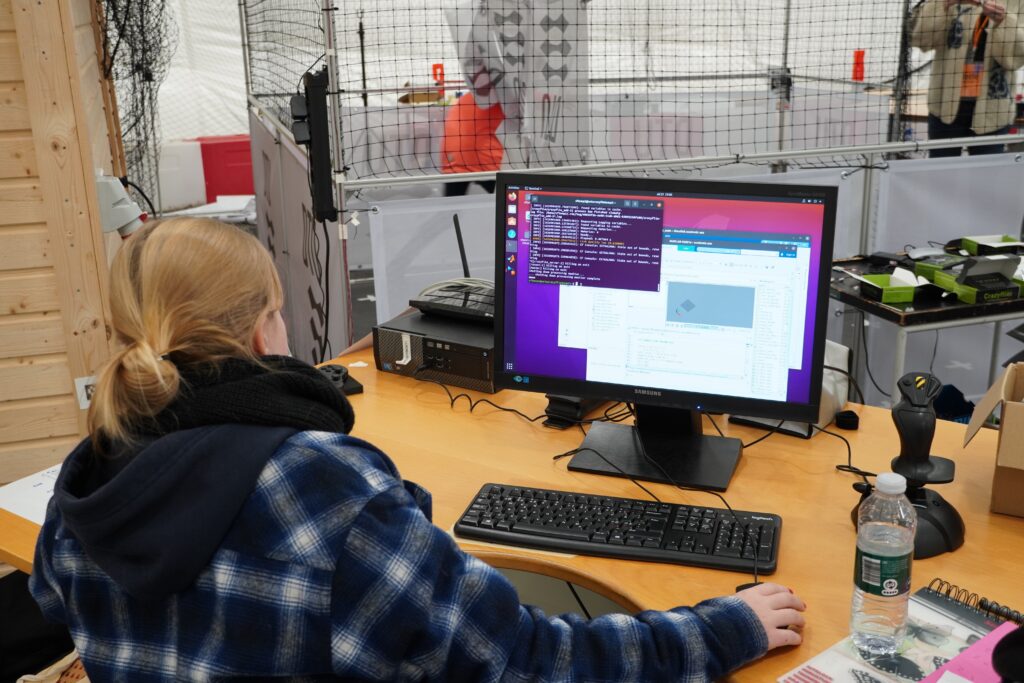
As well as ensuring young girls are fully aware of the opportunities available to them in STEM, through organised events and clubs, she feels that role-models play just as big a part to inspire young girls to pursue a STEM-related career.
“I am an electrical engineer myself, and when I started my bachelors degree in 2019, I was one of 11 girls in a class of 85. It was in my fourth semester when I met a female professor who was from the Electrical department, and she had a huge impact on me, because it was the first time I was witnessing someone who I could mirror myself in. Just being inspired by her, and having her as a professor, I have started an entire organisation that highlights female role-models.”

What is the EU doing to help?
Nordic Women in STEM is not the only organisation trying to equip girls with the skills and experience needed to excel in these fields. The European Institute of Innovation and Technology has launched a project called Girls Go Circular, which aims to empower schoolgirls across Europe to become future leaders and entrepreneurs via an online programme about the circular economy, and encourage women’s participation in STEM, as per the European Commission’s Digital Education Action Plan.
In the last couple of years the European Commission also linked up with Deloitte, the European Women Association and Vlajo to deliver ESTEAM Fests across 19 EU member states. These events took place across the continent with workshops and talks provided by industry professionals, to help girls and women by improving their digital and entrepreneurial competencies and boosting their confidence to choose STEM career paths.
Education – the root of the problem in STEM?
“Girls and women are systematically tracked away from science and maths throughout their education, limiting their access, preparation and opportunities to go into these fields as adults.”
American Association of University Women.
The EPFL: Increasing Opportunities in Switzerland
Over in Switzerland, where Distrelec was founded, the École Polytechnique Fédérale de Lausanne (EPFL) is one of Europe’s most vibrant science and technology institutions. Equality and diversity are at the core of the institution’s ethos, and this can be backed up by the efforts it makes to give girls a chance in heavily male-dominated fields. The Science Outreach Department at EPFL reaches out to 16,000 children and teenagers each year, which includes boys and girls, but with a majority of girls.
The Director of the Science Outreach Department, Dr Farnaz Moser, spoke with us to highlight what barriers are currently blocking girls from pursuing careers in STEM and explains why she launched the ‘Girls in STEM’ program at EPFL.
“Several factors discourage girls from pursuing apprenticeships or university studies in STEM fields. Among them we can quote:
- Cultural patterns and stereotypes concerning ‘women’s professions’ and ‘men’s professions’ especially in Western Europe and North America. These stereotypes are conveyed and transmitted from early childhood. In other countries, such as Malaysia, these patterns do not exist and there are many more women in these fields.
- A lack of female role models in these fields in the immediate environment and in society in general to inspire girls to pursue careers in these fields.
- A lack of previous experience (for example with technical toys or in leisure activities) which leads to a tendency of girls to underestimate their own abilities.
“In order for young women to be willing to engage in these fields, they need to acquire skills from an early age and feel comfortable with them, and they need to be informed about the use of these branches in different fields. Our program aims to introduce girls to the STEM fields, to give them confidence in their abilities, to offer them a space to freely develop their potential, to show them the usefulness of science and technology for society and to put them in contact with role models.”
When Farnaz created the program in 2003, it was a pioneer in girls-only science and technology activities, and was a great way to try and eliminate those barriers to entry for young girls.
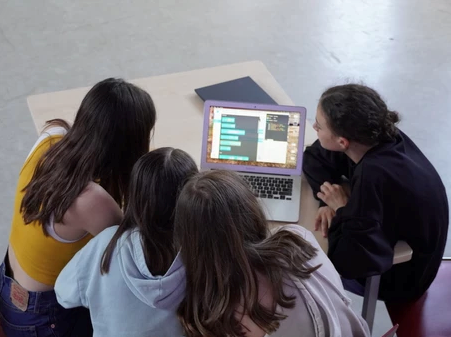
“In 2003, when I was in charge of the Equal Opportunities Office of EPFL, I developed a strategy to introduce young girls, before the age of school orientation, to science and technology and to encourage them to undertake studies or pursue their career path in these fields.
“Thus, we started with an introductory course in computer science with 20 participants aged 10 to 13 in 2003. The aim was to provide them with role models and to open up a dialogue with parents about the importance of encouraging their daughters to go further in these fields. Then we progressively developed a broad program with different actions exclusively for young girls, that we continue today within the framework of the Science Outreach Department and which reaches out to thousands of girls per year in different regions of Switzerland. The EPFL program is aimed at girls aged 7 to 16 in an extracurricular setting through semester courses, workshops and day camps.”
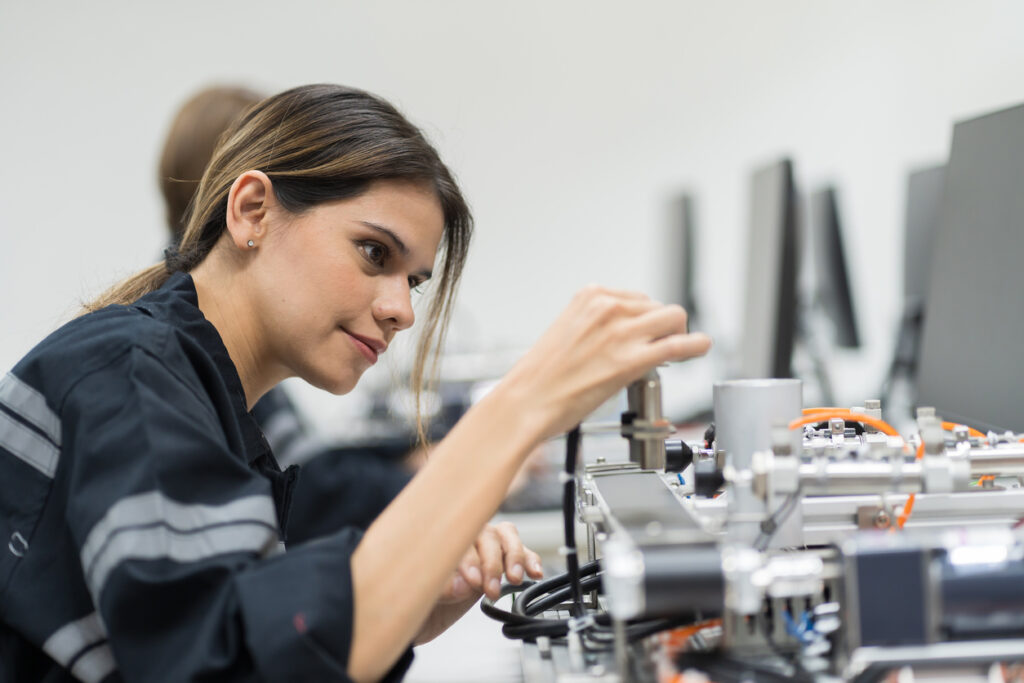
It’s now been 20 years since the program was launched and it’s safe to say that it’s had a positive impact on young girls in Switzerland.
“First I would like to emphasise that the program was built progressively and we now have a critical mass as we have been working with thousands of girls for a few years. We have good results and girls who participate in one activity usually sign up for other activities in these areas. Several female students enrolled at EPFL participated in our activities when they were young, and in turn, they are teaching the activities we are currently organising for the girls”.
Below you can see two testimonials from young girls who enrolled on the program.
“Thank you for organising these classes; if I hadn’t come I wouldn’t have had the confidence to enrol in advanced maths classes or go on to scientific studies.”
15-year-old EPFL program participant.
“I am currently a student at EPFL in mechanical engineering. I would like to have the opportunity to talk about engineering in schools in order to motivate girls to come to our fields. When I was a child, I didn’t have many people working in scientific fields around me, and even fewer women. If I hadn’t had the opportunity to participate in the girls’ workshops at EPFL, I don’t think I would have ended up in this industry.”
EPFL student.
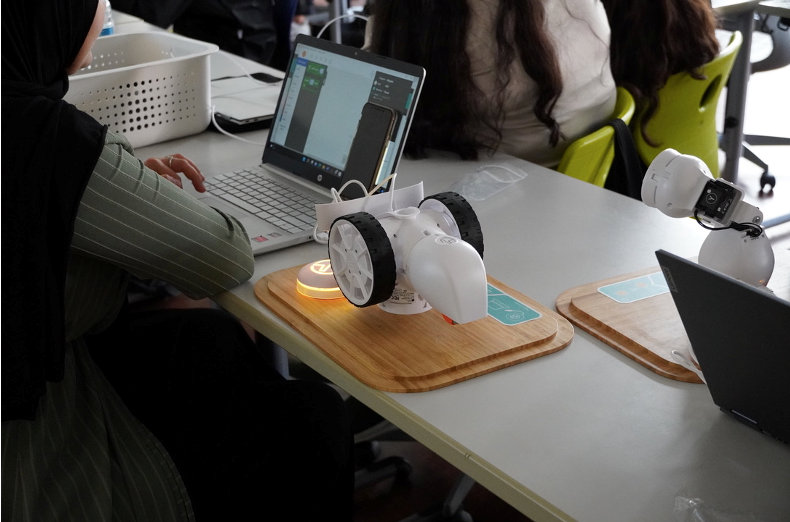
Despite the rave reviews and huge uptake in the program, Farnaz still believes that a lot more needs to be done to achieve equal numbers in STEM by all parties, including men.
“Attitudes must change at all levels. Awareness of parents, teachers, media, employers etc, is necessary. There are many programs and actions launched, and we can say that there is already awareness and an evolution in the right direction. Not only universities but also employers have a responsibility to deploy programs so that women can continue in these fields. We have to continue together and not relax our efforts – changing mentalities and attitudes takes time.
“Men also have a major role. In general, behaviour and actions of convinced men help to introduce changes in their immediate sphere and can convince other men to intervene to change attitudes, infrastructures etc. In addition, many men are fathers who can encourage their daughters to go further in these fields. Attitudes of fathers have a huge influence on their daughters.”
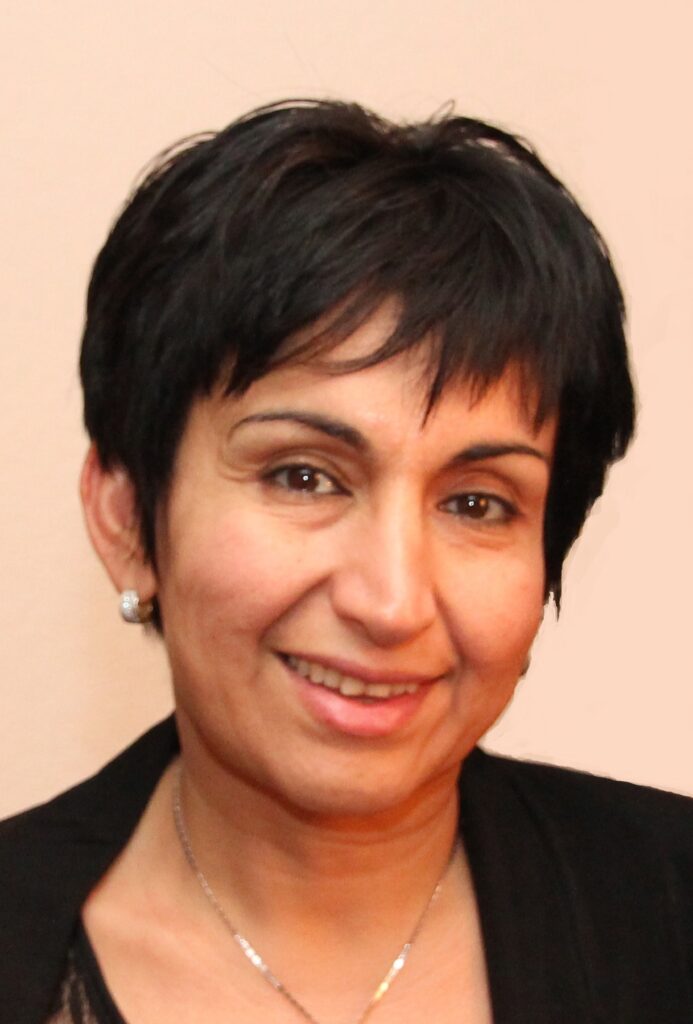
In 2026 in Switzerland, there will be a shortage of several thousands of IT specialists. As this article is written, only 17% of IT professionals are women in the country. Farnaz explains why programs like the one she set up at EPFL are incredibly important in Switzerland.
“Science and technology are present everywhere in our society and play an important role in many areas of daily life such as health, environment, food and communications . Comprehensive and inclusive science education is the key to a prosperous and civilised society. EPFL is a federal school, which is willing to promote science and technology and equal opportunities among young people to help ensure the next generation of STEM experts in Switzerland.”
STEM in the UK
The UK has similar issues. A report from STEM Women in April 2023 states that women make up just 24% of the STEM workforce in the UK, where our Central Enterprise Hub is based. What’s more, in technology professions women hold only 17% of positions, a figure which has seen just a two percent rise over the last 14 years. In engineering roles, women account for just 10% of the workforce.
In an article on LinkedIn about the 25 UK roles that are growing in demand in 2023, you can see the gender split in each STEM role below:
- Cloud Engineer – 16% female; 84% male.
- Data Science Manager – 23% female; 77% male.
- Site Reliability Engineer – 11% female; 89% male.
- Data Engineer – 24% female; 76% male.
- Machine Learning Engineer – 18% female; 82% male.
- Cable Technician – 4% female; 96% male.
- Software Engineer – 40% female; 60% male.

As you can see, it’s very rare for these most growing in-demand jobs to have at least a quarter of female representation. At Distrelec we’re proud to say that 46% of our workforce are women. Whilst that number is still not equal, it signals that we are moving in the right direction and have a higher than average percentage of female staff for a STEM business.
Are gender stereotypes still present in school?
One of the many inspirational women who work at Distrelec, Lucy Henshaw, is the Product Manager for semiconductors, passive components and optoelectronics. Lucy studied Chemistry at Nottingham Trent University, after excelling in the subject, as well as physics and maths. Lucy spoke to us to describe her experience of learning STEM subjects at school in the UK.

“I started to become interested in science subjects at around 12 years old, when we moved to secondary school and began to learn each science individually. I was among one of the initial age groups where they were trying to get more women into STEM, but I was definitely pushed into the ‘female’ sciences such as biology and psychology instead of physics and engineering. A lot of my path was definitely carved out by personal motivation rather than being allowed to go into that avenue.
“I excelled in physics and maths, but in my school, I was actually denied the chance to study physics at A-level, and only one female was permitted into the class in my year group. This was despite being a top-set student throughout secondary school and no reason was given as to why I couldn’t study it.
“When I was studying A-level maths, I was also pushed into taking on extra modules deemed more suitable for female professions such as purchasing and administration. I was denied the ability to study mechanics, again, whilst achieving one of the highest grades in my entire year. This barrier was lifted somewhat at university, where I chose to go down the physical chemistry route, learning and using quantum mechanics and thermodynamics.”
With a clear block being put into place for Lucy, she managed to work her way around it due to her driven mentality, but it shouldn’t be like this anymore. Girls shouldn’t have to take it upon themselves to prove people wrong, and should be given the chance to excel in what they’re good at. This gender bias is just one example of many hurdles that still exist for girls – read below some more barriers which are preventing them from reaching their full potential:
- Lack of confidence.
- Lack of mentors/ senior support.
- Lack of female role models in the same field.
- Difficulty balancing work & other responsibilities.
- Gender bias and derogatory behaviour in the workplace.
- Unequal growth opportunities with male coworkers.
- Lower wage for the same position.
Conclusion
Despite making significant progress over the last few decades, we still have work to do to achieve gender parity in STEM. From what Neha and Farnaz have said in this article, it’s obvious that attitudes need to change for everybody, including schools, universities, families etc., whilst more men can help to shift a gender bias too. Admirable efforts are being made across Europe by lots of organisations and initiatives to enhance accessibility for girls to enjoy STEM subjects, but this needs to continue and maybe even increase if we are to see an uplift over the next few years.
From Lucy’s experience in a UK school, we can see that gender stereotypes still play a part in putting barriers to entry in the way of young girls. When the most talented girls in a group are denied entry for boys who are less skillful in a subject, just because of gender, therein lies the problem. The stats are continuously showing improvements but, hopefully, with more awareness, more accessibility for young girls, a shift in attitudes and more female role-models over the next few years, we can level the STEM playing field for girls and women across the world.










